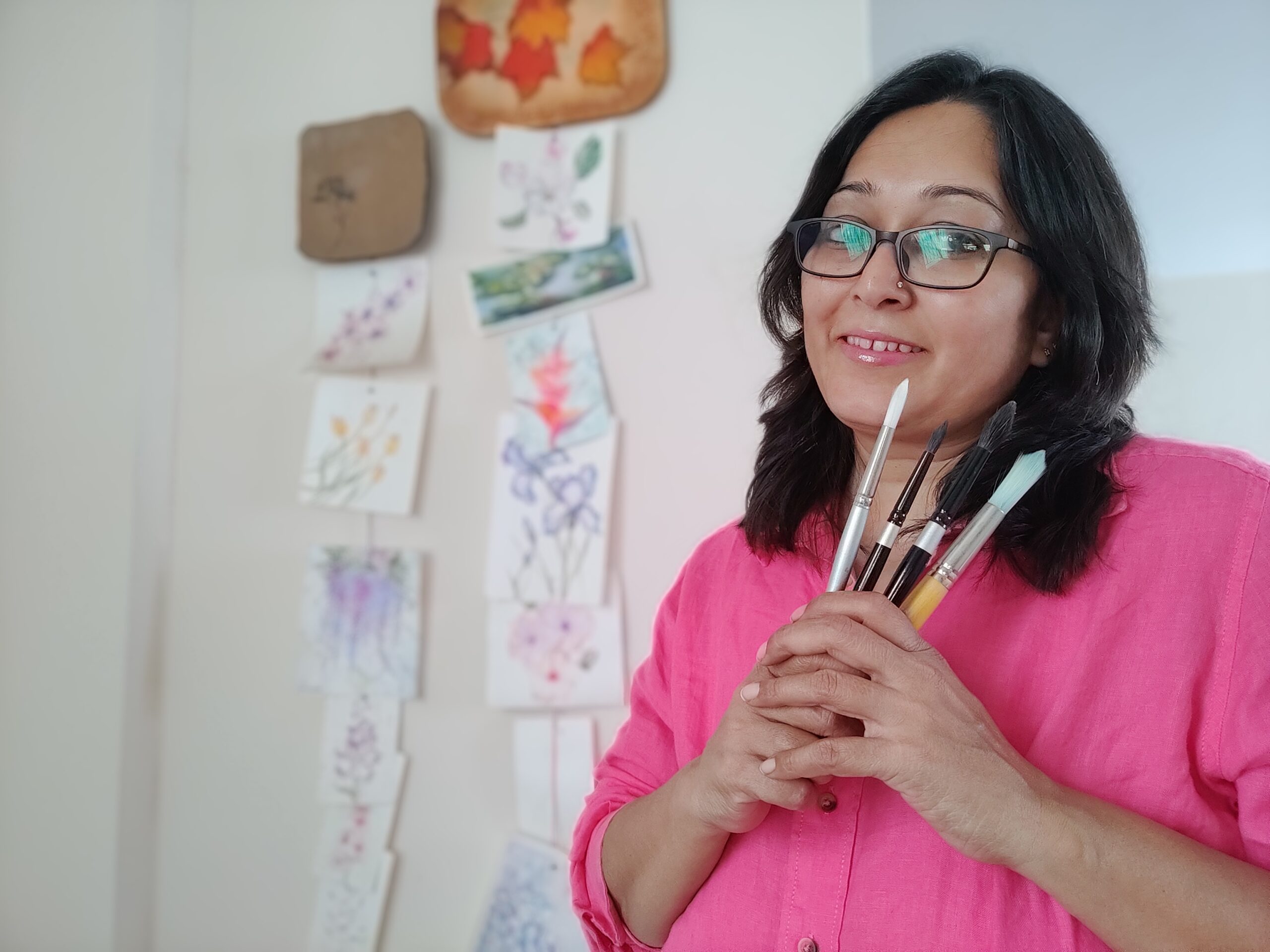
Pauravi Shah, a Bachelor’s degree holder in Fine Art and a diploma in Graphic Design, unearthed her passion for art during her early childhood years. Engaging in drawing since the age of 12, or possibly even earlier, she has explored various art forms but finds her utmost comfort in working with watercolours and graphite. Beyond her artistic pursuits, she serves as a dedicated swim coach, demonstrating her passion for photography and scuba diving. Despite her diverse interests, her heart always gravitates back to art. Whether it’s drawing, painting, or teaching swimming, she holds a deep love for sharing knowledge, finding immense gratification in the joy it brings to others.
1. Do you follow a daily practice routine?
While I strongly believe in the importance of regular practice to enhance one’s skills, my busy schedule and time constraints often limit the frequency of my painting sessions. However, whenever I encounter a subject that feels unfamiliar or hasn’t been explored in a while, I make a conscious effort to dedicate some time to practice. I often opt for monochrome mediums such as graphite or ink wash, as they allow me to focus on understanding the subject better. This preparatory step becomes particularly crucial when aiming to approach the painting with a looser style.
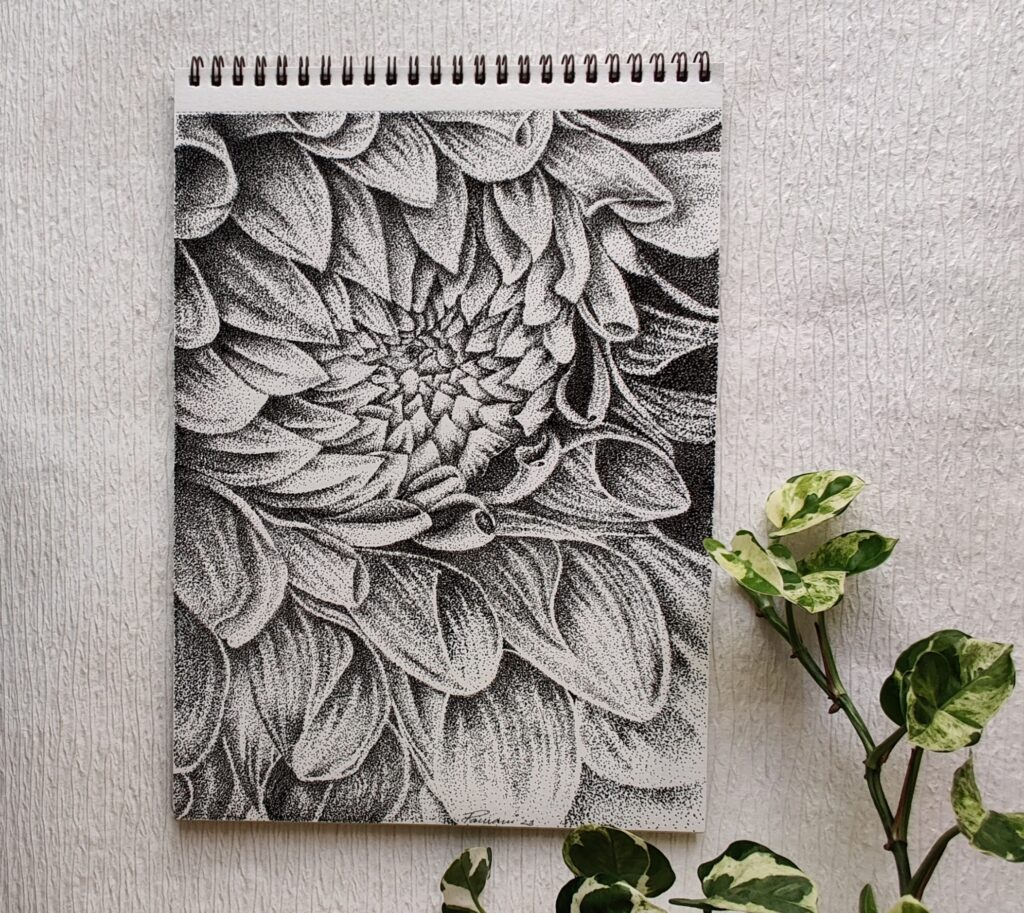
2. Which medium would you pick out of these – oil pastels / watercolours / soft pastels / pencil colours and why?
You’ve mentioned all the mediums I love, but if I had to choose, watercolours would be my top pick. Watercolour in particular, captivates me with its unpredictable nature. The softness and transparency inherent in this medium are unmatched, creating a unique and magical experience as the paint gracefully flows on paper.
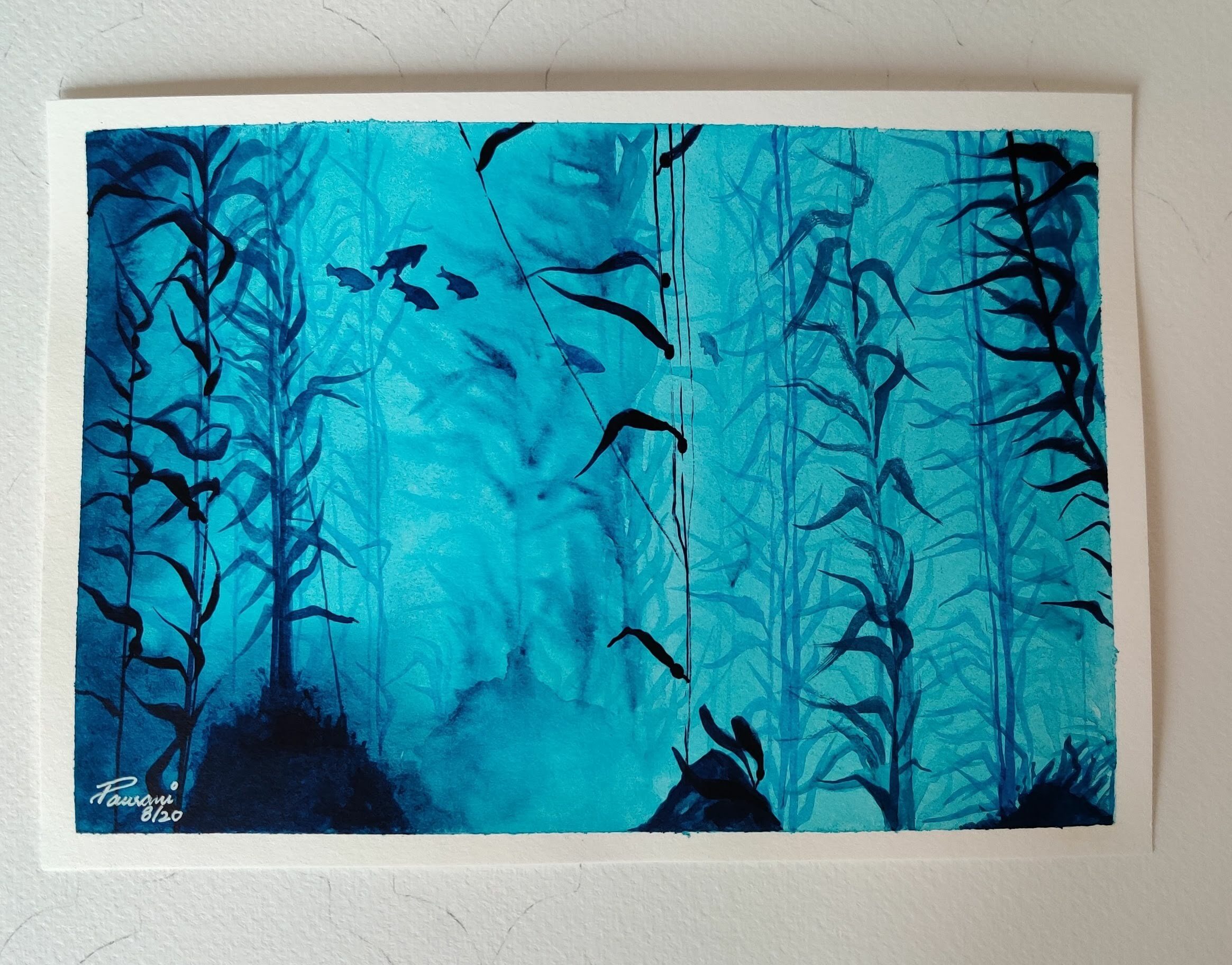
3. How do you balance life as an artist and a swim coach?
This one’s a challenge! My role as a coach kicks off at 5:30 am and winds down at 6:30 pm. I manage to squeeze in some painting during the afternoons, but the day remains bustling with calls and household chores. I find solace in painting during the tranquil hours of the night or on weekends when my schedule is more relaxed. However, when tackling commissioned projects with deadlines, I seize any available daytime moments to make progress. Working with dry mediums becomes a practical choice in the midst of a hectic schedule, allowing me to easily pick up where I left off, unlike the demands of watercolours that necessitate swift completion while the surface remains wet.
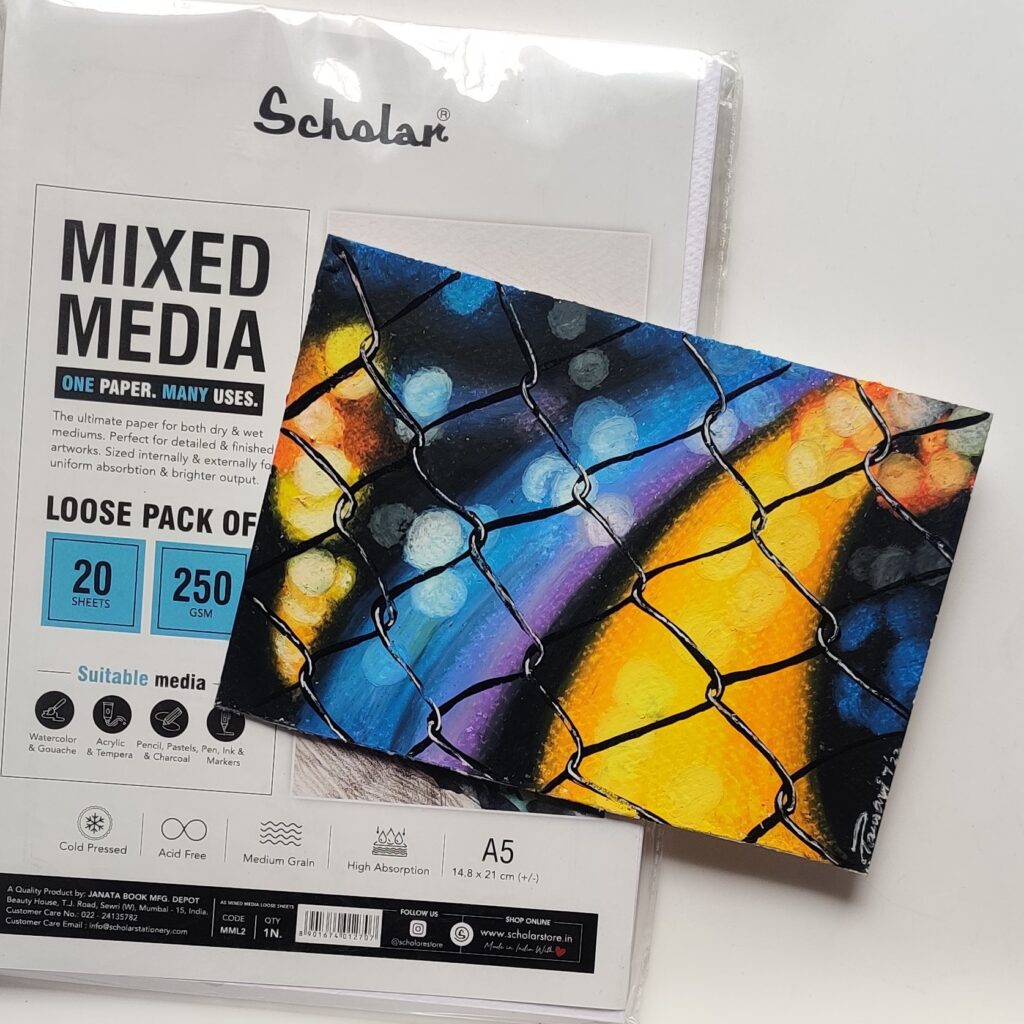
4. We’ve noticed that you have an array of Blue’s in colour palette. What is it about the colour blue that fascinates you?
Believers say that art is a mirror to one’s soul, a canvas that unveils the depths of one’s personality. The colours an artist chooses are like strokes of emotion, painting a vivid portrayal of their inner world. Since childhood, my affinity for water has been an unspoken muse that quietly guides my artistic journey. Subconsciously, the rhythmic ebb and flow of waves, the serene depths, and the ever-changing hues of water have seamlessly woven themselves into my creations. Each stroke, a reflection of my unwavering connection to the fluidity of life, capturing the essence of tranquillity and emotion that I would like to portray through my art.
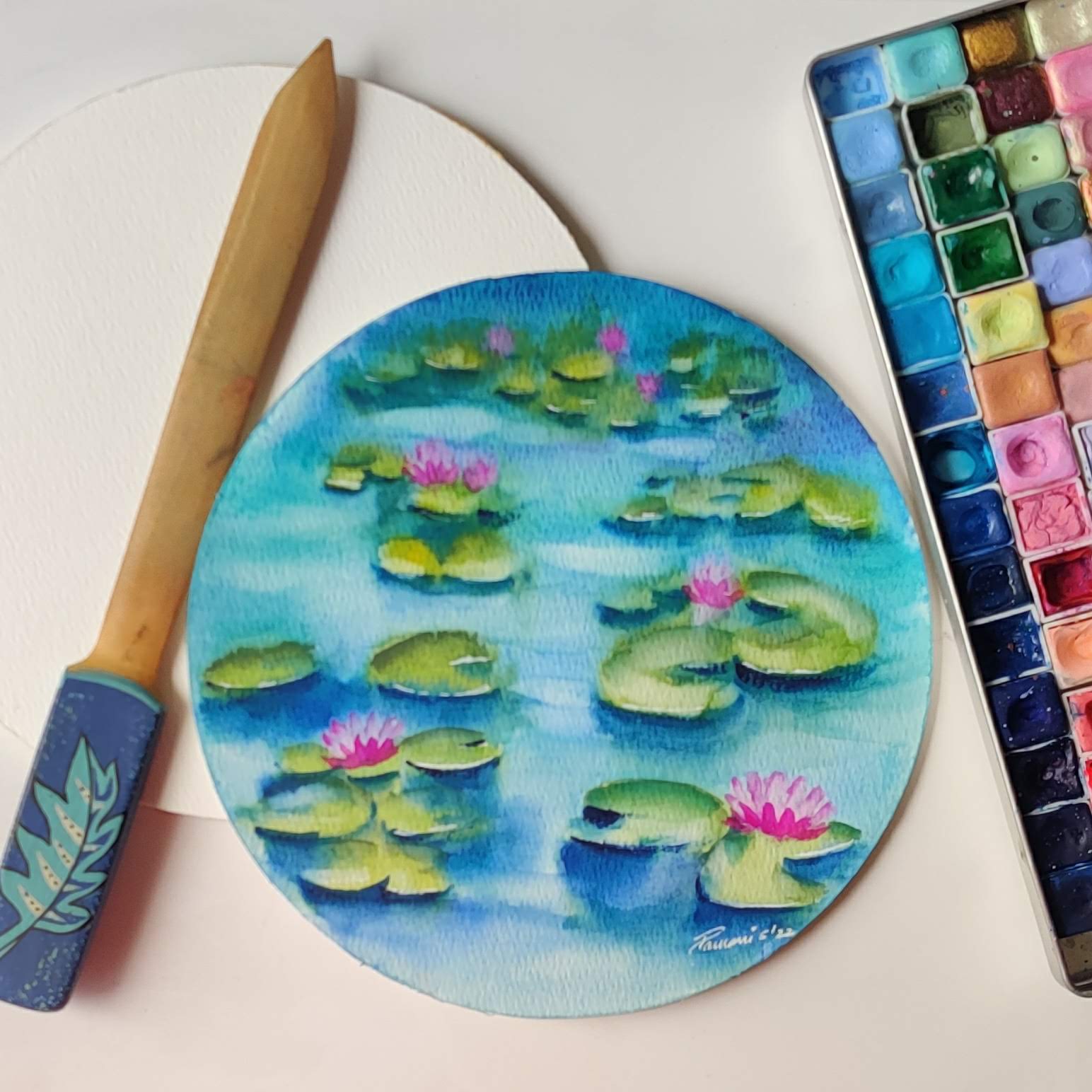
5. Are you a self-taught artist and what got you interested in art?
I embarked on my artistic journey at a young age, finding a deep connection to art classes throughout my school years. Art became my true passion, prompting me to eagerly participate in various art competitions. Recognizing my keen interest, my parents enrolled me in art classes back in 1992 with Hema ma’am, who continues to teach art to this day. I remained under her guidance from my school years through college, extending until 2001 in Chennai. It was clear to me from an early age that I wanted to pursue a career in the arts, leading me to complete my Bachelors in Fine Arts and a Diploma in Graphic Design.
6. Who are the artists that inspired you to start your journey with art?
In my childhood, my uncle and mom were my primary sources of inspiration. Growing up in a joint family, we had a cozy hobby room where my mom dedicatedly crafted cards adorned with pressed flowers she had collected. Meanwhile, my uncle crafted hand-painted birthday cards featuring charming cartoon characters. I would silently sit and observe their creative process with keen interest. As my exposure to art expanded, I found myself captivated by the impressionistic style and vibrant colours of artists like S.H Raza and Claude Monet.
7. What do you do when you get an art block?
First and foremost, I never allow myself to panic when facing an art block. I’ve found that the more one panics and pushes against it, the longer it takes to overcome, and the resulting frustration becomes evident in the work. Given my penchant for experimenting with various mediums, I often switch to a different one and engage in playful exploration. If this doesn’t break the block, I take a step back and take a break, focus on my surroundings for inspiration, capture numerous images for future reference. During this time, I tend immerse myself in YouTube or Instagram tutorials, painting along with others. It’s remarkable how much one can learn through this process, from different painting styles to diverse approaches in creating artwork.
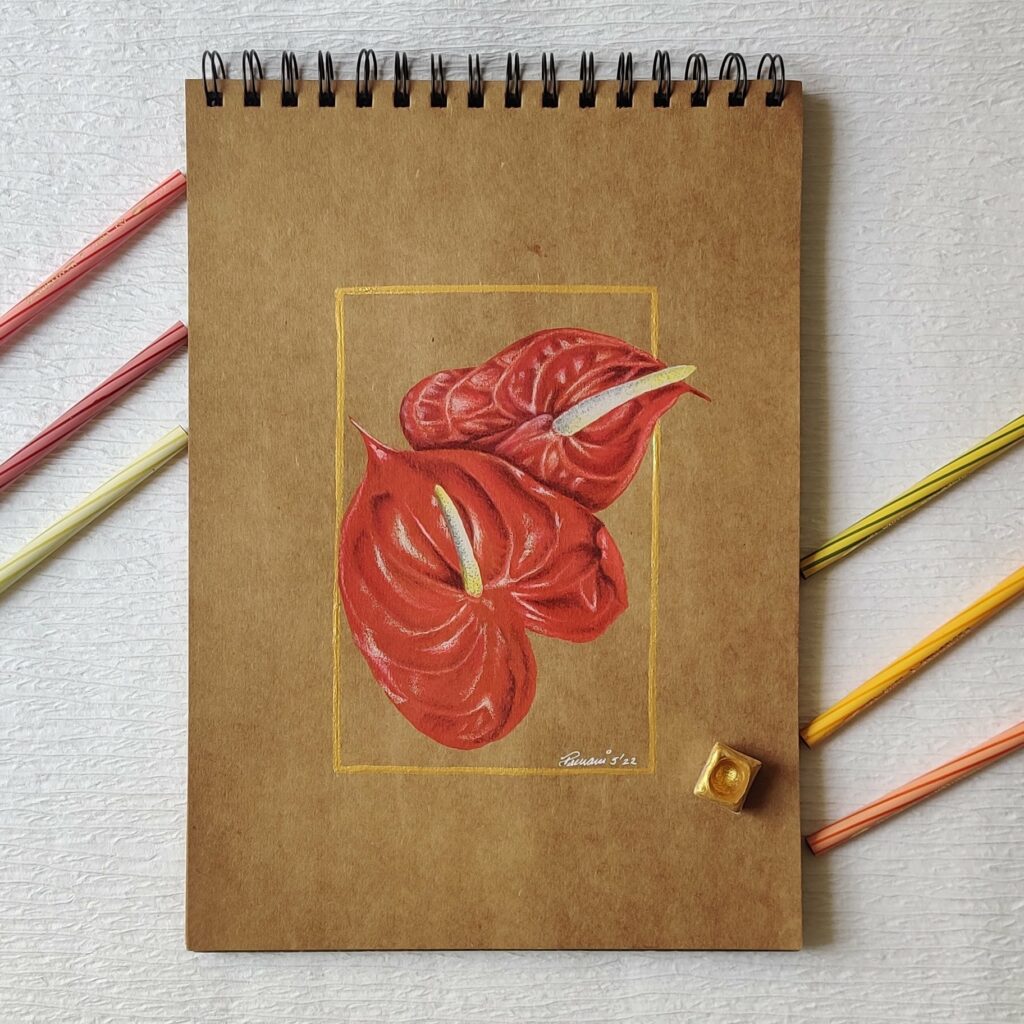
8. What according to you is the most important thing to get better at painting?
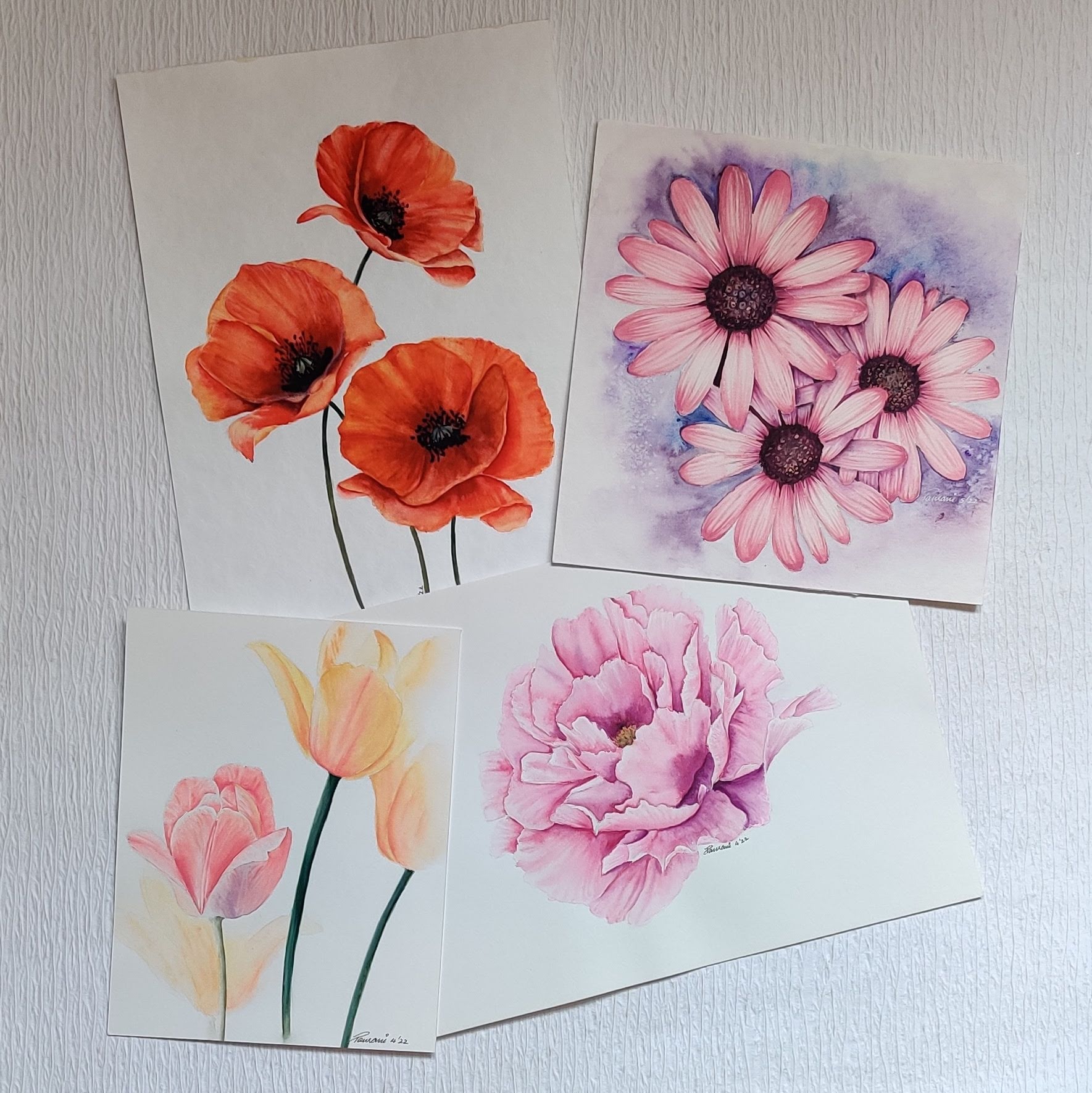
9. Success to you is?
While many define success in terms of monetary gains, my measure of success lies in witnessing the joy my art brings to others and the immediate satisfaction I experience when my swim students, who arrive with zero expectations and numerous fears, leave my class with smiles on their faces. In these moments, the financial rewards are bound to follow. Embrace your passion, and success will naturally find its way to you!
10. What does art mean to you?
Art serves as a profound extension of myself. I don’t adhere to a specific genre or medium; rather, I let my mood guide my brush, choosing the medium that I believe best complements the subject at hand. This approach allows me to shed inhibitions and authentically express myself. Throughout my artistic journey, creating art has been a reliable means of destressing and calming my mind. As a result, art holds a deep and integral significance in my life, consistently serving as a meaningful and essential part of my existence.
11. If there’s only 1 thing you gotta paint forever – what would that be?
It’s a clear choice for me – the ocean. The constantly shifting seascape, with its vastness and soothing essence, would always be my perennial favourite subject. Each beach offers a unique experience, and every moment presents a different sky, providing endless opportunities to capture the beauty of the ocean on paper.
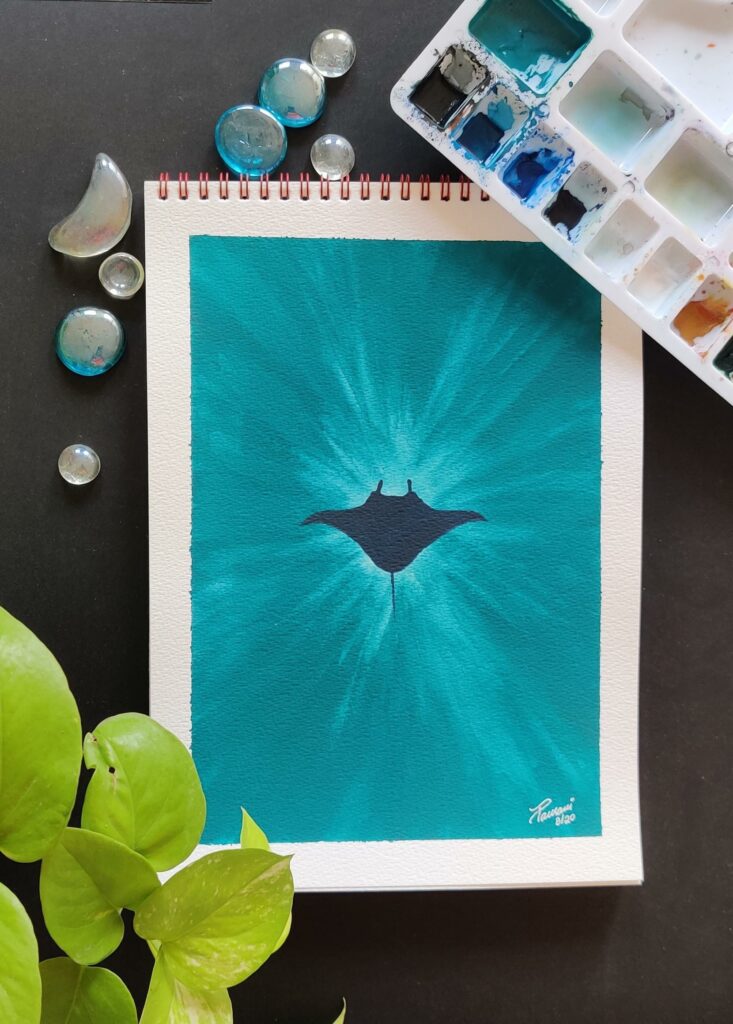
12. If given a chance to explore a medium / art form which you never have – which would you choose and why?
To be completely honest, I delved into and experimented with various art forms throughout my school & college years, ranging from traditional lipan art to printing. However, if there’s one medium that piques my interest for further exploration, it would be acrylics. While I’ve tried and worked with other mediums over the years, I’ve yet to give acrylics the fair consideration they deserve. In the 1990s, the material options in India were limited, but now, the possibilities with acrylics are boundless. The market offers a plethora of different-bodied paints, textured gesso and many more such options opening up a world of opportunities for playing with textures and making acrylics a versatile medium.
13. Which is your favourite Scholar product and why?
The initial product I started with, and it still holds the top spot as my favourite, is the 300gsm cold-pressed watercolour paper with a heavy texture. The distinctive texture of this paper adds a unique dimension to my artwork, making it particularly interesting. However, I must confess that the recently introduced 300gsm Torchon watercolour paper has quickly become my new favourite within the Scholar product range. In fact, when Torchon was launched, I humorously requested them to send me a truckload of stock. The Torchon paper boasts a distinctive cloudy texture and is an
Pauravi's favourites!
-
Out of Stock
₹200.00 – ₹760.00The Scholar 300 gsm torchon rough surface watercolor paper is a premium watercolor paper with a unique texture reminiscent of a cloud. Perfect for bold & expressive paintings.
Torchon, meaning very coarse structure, is an incredible watercolor paper texture that blends with the images and lends them an impressive three-dimensional effect and sense of depth. Features breathtaking ocean print covers & colored wire binding inspiring you to upgrade your watercolor craft.
-
- 50 % Off
₹275.00 – ₹550.00Features a Premium European Paper made with cotton fibers for enhanced durability & outstanding results. Sized internally & externally for optimum absorption. Long life paper that does not pale with time.
Ideal for : Watercolour, gouache, tempera, acrylic, ink & all dry mediums.
-
₹200.00 – ₹760.00
Features loose sheets of Premium European Paper made with cotton fibers for enhanced durability & outstanding results. Sized internally & externally for optimum absorption. Long life paper that does not pale with time.
Ideal for : Watercolour, gouache, tempera, acrylic, ink & all dry mediums.


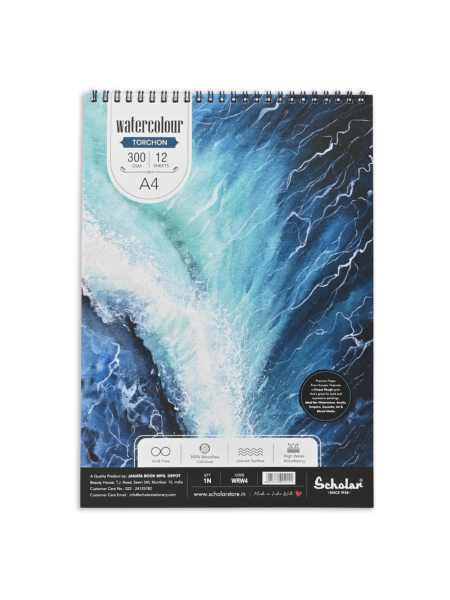
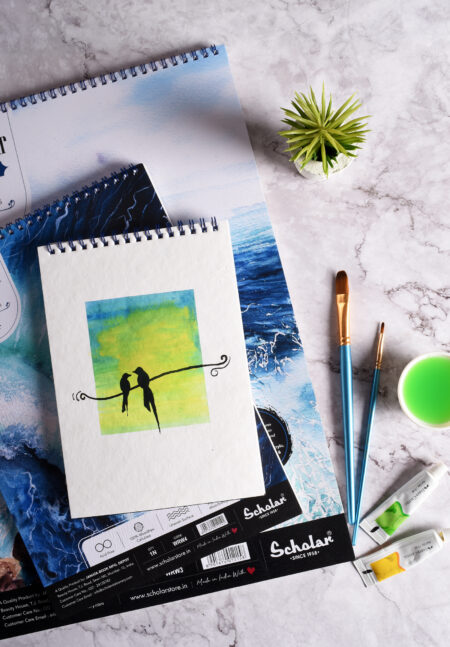
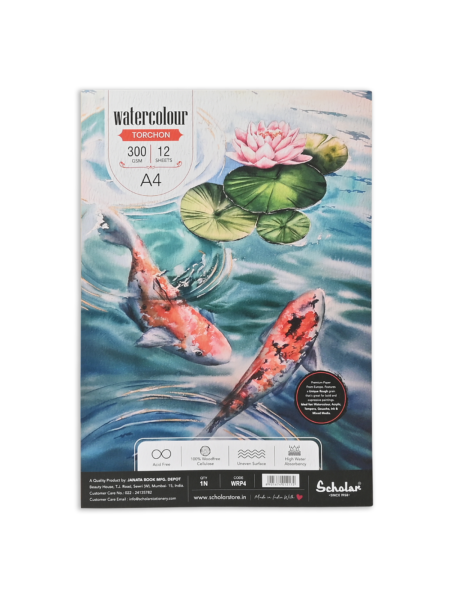
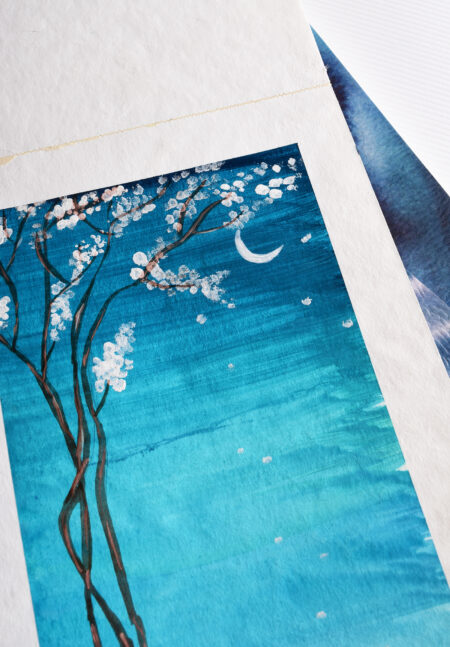

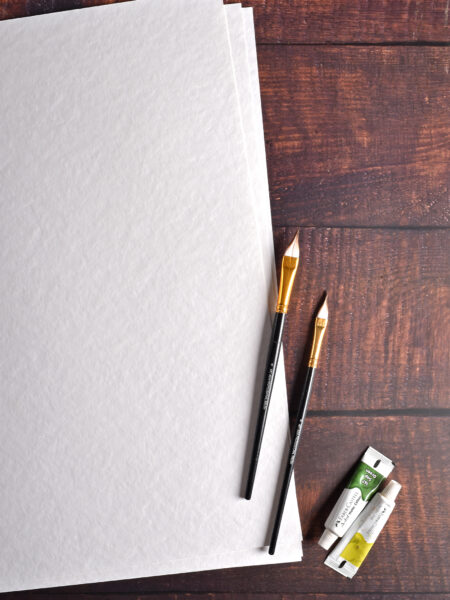
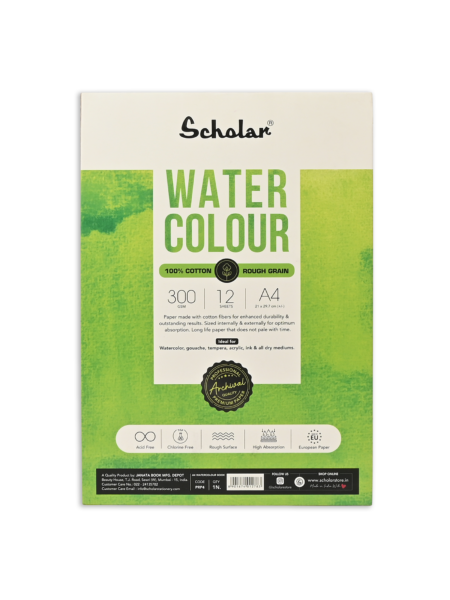
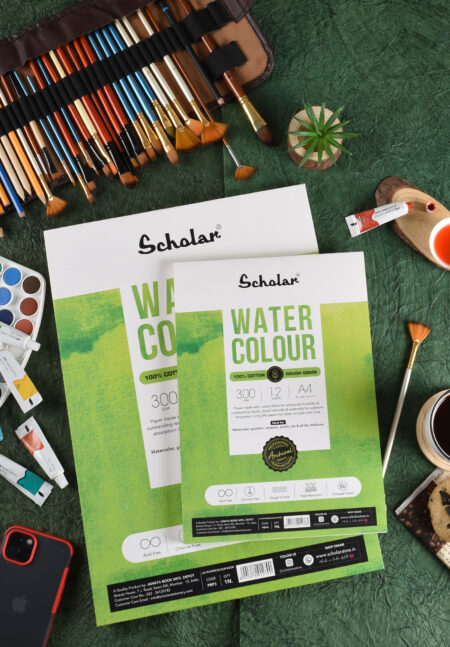
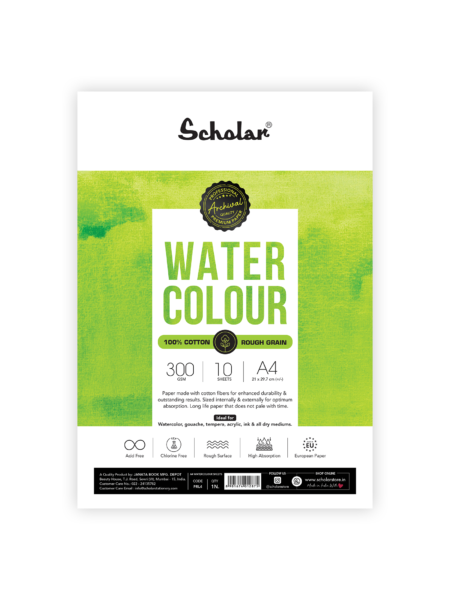
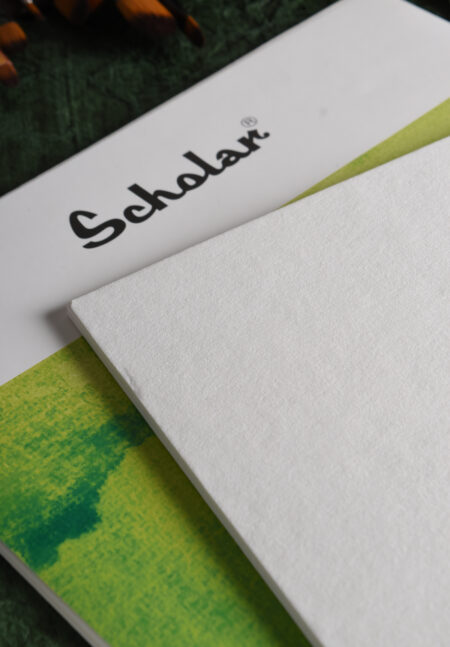
Leave a Reply
You must be logged in to post a comment.